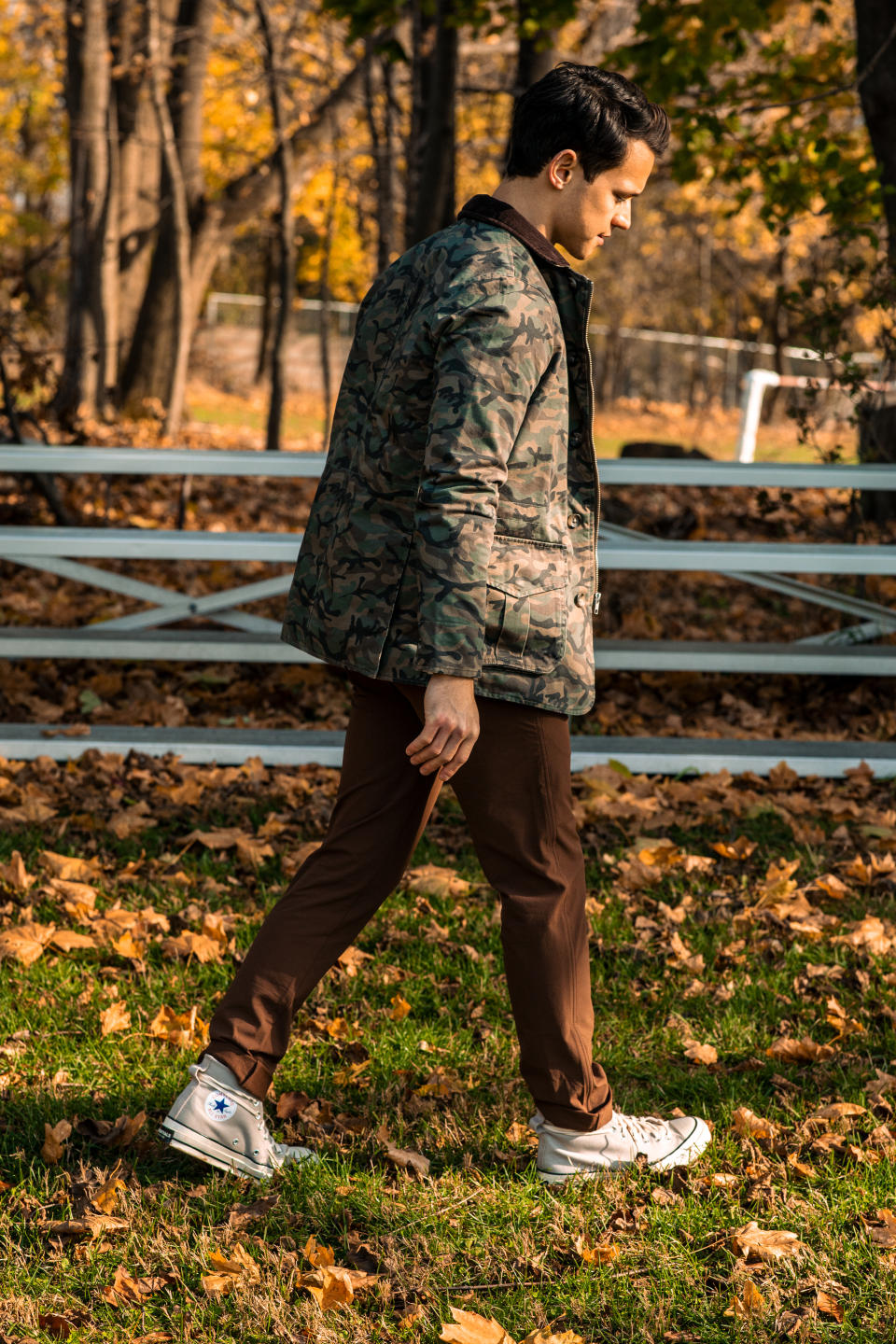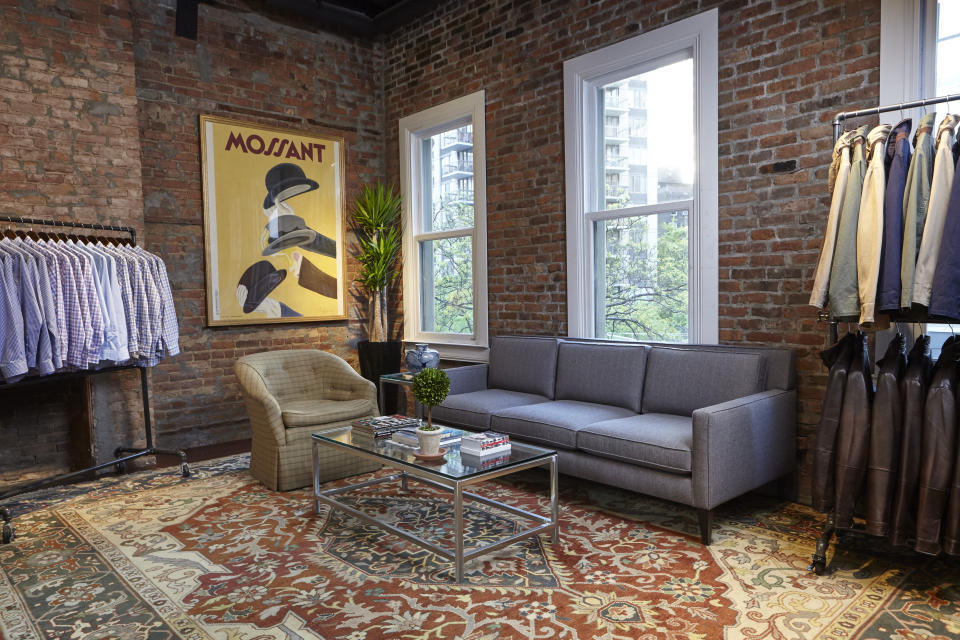Peter Manning Purchased by Longtime CEO Who Plans Expansion
- Oops!Something went wrong.Please try again later.

Big and tall is a common sizing option for men who don’t fit into the standard apparel offerings, but what about the 30 percent of the U.S. male population that is shorter than the average height of 5 feet 9 inches? The options are not nearly as plentiful.
That’s the void Peter Manning sought to fill in 2012 when he founded his eponymous brand to dress shorter men.
More from WWD
Manning, whose career was in the theater business in New York, stands 5 feet 8 inches and had always had a hard time finding clothes that fit him properly and didn’t require expensive alterations. As the story goes, he’d been frustrated since the 1970s when he bought a pair of bell-bottom jeans, but after going to a tailor to have them taken up, he was told that after they were altered, they wouldn’t be bell-bottoms any more.
“He’s been angry ever since,” said Jeff Hansen, chief executive officer of Peter Manning. Hansen, a retail veteran whose background includes J.McLaughlin, Frette and La Perla, said while Manning had a great idea, he didn’t have experience in either fashion or retail, so he agreed to come on board to run the business. Their first product was a chino with a 26-inch inseam. Although there were a few hiccups early on, once the fit was perfected, the pants “sold like hotcakes,” Hansen said.
Since then, the company has expanded beyond strictly an online business to one with a showroom in New York’s Flatiron District and a variety of products including dress and casual shirts, polos, T-shirts and Henleys; casual and dress pants as well as jeans; hoodies, vests, field jackets, down jackets, parkas, leather jackets and topcoats.

The sizing is unique to Peter Manning and is based on height, weight and body type with slim, standard and broad cuts. The proprietary size system uses a sizing system of 1 to 4 as well as 2X, 4X and 4XL which covers men from 5 feet 7 inches and 145 pounds to 5 feet 10 inches and 200 pounds.
The business has been profitable almost from Day One and has been growing exponentially in the past several years since Hansen established a strong manufacturing base to support the expanded assortment. “Even during COVID-19, we were up 50 percent last year,” Hansen said.
The product is designed by an in-house team and there is a 15,000-square-foot warehouse in Brooklyn where merchandise is housed and shipped directly to customers — the showroom only has samples that customers can try on and order. Prices are accessible, with pants retailing for around $90 or $100, shirts for $88, a suit for $650 and a leather jacket for $50.
With Peter Manning on solid ground, its founder and namesake transitioned out of the business, leaving Hansen in charge. And just this month, Hansen bought out Manning’s share of the company and became its sole owner.
The name will remain the same, but Hansen has plans to further expand Peter Manning’s reach.
“My plan is to be more aggressive in growing our e-commerce business through marketing,” he said. “And I’m starting to look at more retail locations.”
He said he’s long been a believer that a blend of physical and online retail is the best way to build a brand, and he has plans to significantly expand the company’s brick-and-mortar presence. He believes that Peter Manning can support between 10 and 40 stores in top metropolitan markets, using online data to determine the locations that are expected to include another location in New York City, as well as other key cities such as Los Angeles, Chicago and Houston.

“Our guys are everywhere,” he said. “The only common thread is their demographic.”
Hansen believes the company’s primary strength is its distinct fit, which has taken seven years to perfect.
On the website, the company is very sensitive in its wording and doesn’t use the word “short” to describe its customer base. “It’s tricky to talk to guys without being insulting,” Hansen said.
Instead, it opts for “Not so Tall” or “Not so Slim.” But it is more aggressive in its explanations of how its proprietary sizing works, boasting that there will be no more bunching at the wrist, “pirate arms” in shirts, crotches that hang too low or stacking at the ankles in pants.
The assortment is also fairly classic to appeal to a wide range of men.
“Our guys are not fashion guys,” he said. “They don’t want the latest from Tom Ford, they just want pants that fit.”
That being said, Peter Manning does try to inject a little fashion into its offering, including buffalo plaid overshirts and camouflage jackets; puffers and utility vests; jeans and cotton dress pants with stretch, and shirts that can be worn untucked.
“Men are more particular with their clothing today,” Hansen said. “Before us, they weren’t walking around naked, they found solutions, but they weren’t used to a good fit.”
Pants continue to represent 60 percent of the business, but outerwear has become more popular, led by field jackets, leather bombers and now down coats.
Looking ahead, Hansen sees opportunities to further expand its offering. A ski pant, for example, was a big hit last year, and he expects to add workout joggers and shorts in the future.
But one thing’s not on the table, and that’s women’s wear.
“We definitely wouldn’t do women’s,” he said. “It’s too complicated.”
Sign up for WWD's Newsletter. For the latest news, follow us on Twitter, Facebook, and Instagram.

